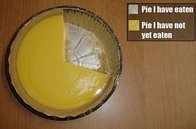| View previous topic :: View next topic |
| Author |
Message |
yarg28
Been Here Awhile

Joined: 25 Aug 2014
Posts: 267
Location: Indiana
|
 Posted: Thu Aug 27, 2015 3:01 pm Post subject: cable pass through ideas? Posted: Thu Aug 27, 2015 3:01 pm Post subject: cable pass through ideas? |
 |
|
I'm about to complete my booth design and the one thing that I'm struggling with is a good method for getting cables into the booth. I've done some google searches and don't see much in the way of purchased pass throughs that are also good at sound reduction.
I thought maybe a few of you had built something and had a solution.
Thank you. |
|
| Back to top |
|
 |
NorthEndVoice
Contributor IV
Joined: 24 Jul 2005
Posts: 148
Location: Virginia/North Carolina/Florida
|
 Posted: Thu Aug 27, 2015 9:18 pm Post subject: Posted: Thu Aug 27, 2015 9:18 pm Post subject: |
 |
|
A couple of ways to go on this that come to mind. The hard rubber cable port "plugs" would probably be the easiest (and they work fine). Basically it serves to carry the cable(s) through the booth wall to whatever you connect it to. Whisper Room uses these and they're fine.They're a couple of inches in diameter and don't allow noise in when properly fitted. They have a slit and somewhat of a channel to allow the cable to fit. Easy to install and easy to remove the cables and plugs. You could probably even fashion custom ones yourself out of industrial type rubber plugs. Vibration insulators used in commercial applications come to mind, depending on the thickness of your studio wall.
Another (more involved) way would be to use XLR patch panels. They're nice but really not necessary unless you have a lot of cables that you're routing. It also adds two more physical connections per cable that could go bad.
My vote is for the rubber cable port(s). Easy and effective. Plus you can run your audio cables through one port and run the power cables through another one. Never a bad idea to keep those separate. |
|
| Back to top |
|
 |
Lee Gordon
A Zillion

Joined: 25 Jul 2008
Posts: 6868
Location: West Hartford, CT
|
 Posted: Fri Aug 28, 2015 1:02 am Post subject: Posted: Fri Aug 28, 2015 1:02 am Post subject: |
 |
|
Originally, I planned to run some PVC conduit with a couple of bends, similar to the trap under your kitchen or bathroom sink, snake the cable through, and then plug the pipe with acoustical sealant such as Green Glue Sealant (the sealant, not the glue). In the end, I decided to just drill a straight hole through the wall, poke the cables through, and fill that cavity with sealant. I happened to have some Sheetrock brand sealant that I got from a local supplier. It was so stiff, I ended up not using it for most of the sealing, but it was perfect for stuffing in those openings.
_________________
Lee Gordon, O.A.V.
Voice President of the United States
www.leegordonproductions.com
Twitter: @LeeGordonVoice
 |
|
| Back to top |
|
 |
Jason Huggins
The Gates of Troy

Joined: 12 Aug 2011
Posts: 1846
Location: In the souls of a million jeans
|
 Posted: Fri Aug 28, 2015 6:23 am Post subject: Posted: Fri Aug 28, 2015 6:23 am Post subject: |
 |
|
| I used the Green Glue sealant for my first cable run...but it makes a mess of the cables and if you need to redo it you have to clean off all the gunk. The second passthrough I made I took a really huge rubber band (I had some that were about 1" wide and 10' long that I purchased on Amazon for my move) cut it so it wasn't a loop anymore and then started wrapping it really tight around my cables. After quite a few wraps (and covering an area that was about 2" wide) there started to be a rubber ball around the cables. I had drilled a 1 1/2" hole in the drywall with another hole inside that was offset a bit so I just kept wrapping until the ball was a bit bigger than the hole and wedged it into the hole. Should be sealed up really nice and it would be very clean an easy to redo if I needed to replace a cable or run another cable in there. |
|
| Back to top |
|
 |
yarg28
Been Here Awhile

Joined: 25 Aug 2014
Posts: 267
Location: Indiana
|
 Posted: Fri Aug 28, 2015 7:02 am Post subject: Posted: Fri Aug 28, 2015 7:02 am Post subject: |
 |
|
Thanks for the tips/info.
Also, Northendvoice; "The hard rubber cable port "plugs""- are these something that you've seen somewhere? I just couldnt find them.
thanks! |
|
| Back to top |
|
 |
Bruce
Boardmeister

Joined: 06 Jun 2005
Posts: 7980
Location: Portland, OR
|
 Posted: Fri Aug 28, 2015 9:03 am Post subject: Posted: Fri Aug 28, 2015 9:03 am Post subject: |
 |
|
It looks like a proper term is "cable grommet" and here's a link to a Google search. Some appear to have rubber sheets with a small hole that will expand as you add cables. My memory from my radio days is stuffing grommets or just plain holes with Auralex type foam bits to fill them up. That allows for easy changes without a permanent seal.
https://www.google.com/webhp?sourceid=chrome-instant&ion=1&espv=2&ie=UTF-8#q=cable%20grommet%20for%20wall

B
_________________
VO-BB Member #31 Enlisted June, 2005

I'm not a Zoo, but over the years I've played one on radio/TV. . |
|
| Back to top |
|
 |
Roar-duh
Contributor III

Joined: 04 Apr 2015
Posts: 81
Location: Chicago-ish
|
 Posted: Fri Aug 28, 2015 9:28 am Post subject: Posted: Fri Aug 28, 2015 9:28 am Post subject: |
 |
|
My audiology booth has a patch panel with only 1/4" jacks, and I've been thinking of upgrading it to something like this down the line.
http://www.infinitecables.com/pop/wpk-ss-207.htm

I think that the convenience of not having your cables entombed in green glue or convoluted routing is worth the small risk associated with multiple connection... especially with advanced stage gear-itis. And it appears to be easy to service if there are ever issues.
_________________
John Roorda
http://johnroorda.com
Last edited by Roar-duh on Fri Aug 28, 2015 10:09 am; edited 1 time in total |
|
| Back to top |
|
 |
yarg28
Been Here Awhile

Joined: 25 Aug 2014
Posts: 267
Location: Indiana
|
 Posted: Fri Aug 28, 2015 10:07 am Post subject: Posted: Fri Aug 28, 2015 10:07 am Post subject: |
 |
|
Bruce and Roar-duh, Thanks for both of those links!
Those both have possibilities and knowing the correct search term will help. |
|
| Back to top |
|
 |
NorthEndVoice
Contributor IV
Joined: 24 Jul 2005
Posts: 148
Location: Virginia/North Carolina/Florida
|
 Posted: Fri Aug 28, 2015 10:55 am Post subject: Posted: Fri Aug 28, 2015 10:55 am Post subject: |
 |
|
Here is a link to what I'm referring to regarding the rubber cable port stoppers. They are also referred to as "bungs"...(..but this is kinda a family board...)
http://www.customgasketmfg.com/MoldedRubberProducts/RubberStoppersPlugsCapsBalls
These don't allow any extra sound in (or out) of the studio space. They fit very firmly into whatever pre cut access ports you have. Basically just a big rubber stopper with a hole allowing a cable to run through it. You do have to cut a slit from the side down to the hole so you can squeeze the cable(s) to fit inside it.
This solution gives you options. Down the road if you decide to change your cable runs and move things around, you can easily remove these. Plus if you don't need access through a particular access port, just plug it back up with the stopper/plug.
By far the easiest and most foolproof way to address cable pass through for a small studio.
Last edited by NorthEndVoice on Fri Aug 28, 2015 11:21 am; edited 1 time in total |
|
| Back to top |
|
 |
Bruce
Boardmeister

Joined: 06 Jun 2005
Posts: 7980
Location: Portland, OR
|
 Posted: Fri Aug 28, 2015 11:05 am Post subject: Posted: Fri Aug 28, 2015 11:05 am Post subject: |
 |
|
Despite not being the kind of grommet we're talking about, the Gromit on the right here might be able to help. If you've seen their videos you'll know he's quite tech savvy.

B
_________________
VO-BB Member #31 Enlisted June, 2005

I'm not a Zoo, but over the years I've played one on radio/TV. . |
|
| Back to top |
|
 |
georgethetech
The Gates of Troy

Joined: 18 Mar 2007
Posts: 1878
Location: Topanga, CA
|
 Posted: Fri Aug 28, 2015 12:50 pm Post subject: Posted: Fri Aug 28, 2015 12:50 pm Post subject: |
 |
|
Don't overthink it... a straight piece of 2" PVC is just fine, add a trim plate at each end if you want. Pull your cables and stuff the tube with a rag or foam.
_________________
If it sounds good, it is good.
George Whittam
GeorgeThe.Tech
424-226-8528
VOBS.TV Co-host
TheProAudioSuite.com Co-host
TriBooth.com Co-founder |
|
| Back to top |
|
 |
bobsouer
Frequent Flyer

Joined: 15 Jul 2006
Posts: 9883
Location: Pittsburgh, PA
|
 Posted: Sun Aug 30, 2015 2:21 pm Post subject: Posted: Sun Aug 30, 2015 2:21 pm Post subject: |
 |
|
I did exactly what George suggests above. Used a short length of 2" PVC pipe and I have an old towel that I stuff in there. When I need to run and new cable or remove something, I just pull out the towel, make the needed changes and stuff the towel back in the pipe. Works brilliantly.
_________________
Be well,
Bob Souer (just think of lemons)
The second nicest guy in voiceover.
+1-724-613-2749
Source Connect, phone patch, pony express |
|
| Back to top |
|
 |
Mike Harrison
M&M

Joined: 03 Nov 2007
Posts: 2029
Location: Equidistant from New York City and Philadelphia, along the NJ Shore
|
 Posted: Sun Aug 30, 2015 5:29 pm Post subject: Posted: Sun Aug 30, 2015 5:29 pm Post subject: |
 |
|
| bobsouer wrote: | | I did exactly what George suggests above. Used a short length of 2" PVC pipe and I have an old towel that I stuff in there. Works brilliantly. |
"Simplicity is the ultimate sophistication." —Leonardo da Vinci
_________________
Mike
Male Voice Over Talent
I have taken leave of my sensors.
 |
|
| Back to top |
|
 |
yarg28
Been Here Awhile

Joined: 25 Aug 2014
Posts: 267
Location: Indiana
|
 Posted: Sun Aug 30, 2015 5:51 pm Post subject: Posted: Sun Aug 30, 2015 5:51 pm Post subject: |
 |
|
| thanks for all the input! The comments were very helpful. |
|
| Back to top |
|
 |
NorthEndVoice
Contributor IV
Joined: 24 Jul 2005
Posts: 148
Location: Virginia/North Carolina/Florida
|
 Posted: Sat Sep 05, 2015 12:35 am Post subject: Posted: Sat Sep 05, 2015 12:35 am Post subject: |
 |
|
With all due deference .... no matter what... you're gonna have to bring your cables into the room. Just a thought....What will be easier ? You need a "cable port"....now....think about it....you've just used a hole saw (or similar)
to allow access.... measure accordingly...are you now going to insert a piece of PVC..? You didn't specify your wall thickness.
The rubber bungs are a very viable and (in my opinion) preferable solution for your application. You want easy AND effective.....rather than have to "stuff" a PVC conduit with whatever. The implication being that ALL of your cables will run through that "pass thru"
I will also add this....it is always best if possible to keep your power (AC) apart from your low level audio cables. Some say it doesn't matter with the shielding but it certainly can't hurt.
Maybe overcautious on this but safety is also not a bad reason to route both power and audio apart. Chief engineer at a station once was working on the production console rewiring a couple of things and cut through what he thought was an audio cable. It was. (Belden). But someone previous to him used that to run AC power to something. Needless to say, he got a nasty surprise but lived to be extremely unhappy about it.
Last edited by NorthEndVoice on Sat Sep 05, 2015 10:24 pm; edited 1 time in total |
|
| Back to top |
|
 |
|








